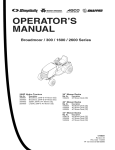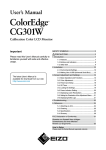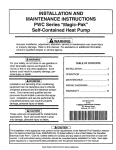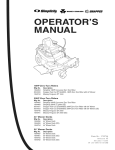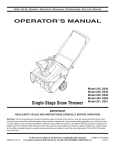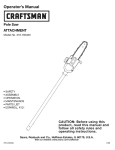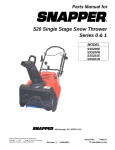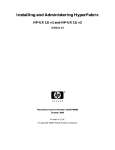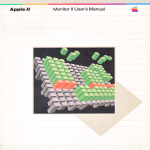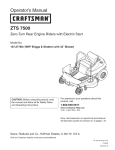Download Simplicity 520M Specifications
Transcript
0 5implicilq 0 A 520M Mfg. No. 1693643 1693645 85630 520E Mfg. No. 1693644 85631 ® TM ATO UAL Models Description 520M, 5HP Snowthrower, Manual Start 520M, 5HP Snowthrower, Manual Start (CE) SS5200R, 5HP Snowthrower, Manual Start Models Description 520E, 5HP Snowthrower, Electric Start SS5200E, 5HP Snowthrower, Electric Start 1720536-03 Rev 5/2003 TP 100-2290-03-SW-SN (ableofContents Safety Rules & Information General ................................................................... Regular Maintenance 2 Removing Belt Cover ............................................ Lubrication ............................................................ Slope Operation ...................................................... Children ................................................................... 2 3 Emissions ................................................................ 3 Troubleshooting Service & Maintenance ........................................... 3 Removing Engine Cover ....................................... Troubleshooting 14 14 & Service .................................................... 15 15 ANSI B71.3-1995 Warnings .................................... 4 Identification Numbers ............................................ 5 Auger Control Cable Adjustment .......................... 16 Safety Decals .......................................................... 6 Replacing the Drive Belt ....................................... International Symbols ............................................. 6 Replacing the Scraper Blade ................................ 17 Assembling the Snowthrower .................................... Carburetor Adjustment (Ref. only) ........................ 16 7 Servicing the Spark Plug ....................................... 17 17 Controls & Operation Snowthrower Controls ............................................. 8 Engine & Starting Controls ...................................... 9 Specifications ........................................................ Parts & Accessories .............................................. 18 18 10 Technical Manuals ................................................ 18 General Operation ................................................ Appendices Checks Before Each Start-Up ............................... 10 Mixing Fuel ............................................................ 11 Starting the Engine ............................................... 12 Stopping the Engine .............................................. 12 Operating the Snowthrower .................................. 13 Snowthrowing Tips ................................................ After Each Use ...................................................... 13 13 Off-Season Storage .............................................. 13 Starting After Storage ........................................... 11 ,_ WARNING Engine exhaust from this product contains chemicals known, in certain quantities, to cause cancer, birth defects, or other reproductive harm. Readthesesafetyrulesandfollowthemclosely.Failuretoobeytheserulescouldresultin lossofcontrol of unit,severepersonalinjuryordeathtoyou,or bystanders, or damageto propertyor equipment. Thetriangle_, intextsignifiesimportant cautionsor warnings whichmustbefollowed. GENERAL OPERATION = Read, understand, and follow all instructions in the manual and on the unit before starting. • Only allow responsible adults, who are familiar with the instructions, to operate the unit (local regulations can restrict operator age). • Clear the area of objects such as rocks, toys, wire, etc., which could be picked up and thrown. • Be sure the area is clear of other people. Stop unit if anyone enters the area. • Always look down and behind before and while travelling in reverse. Be aware of the discharge direction and do not point it at anyone. Do not point the discharge at glass enclosures, automobiles, or windows. Disengage all clutches (release drive and auger control levers) before starting the engine. Never leave a running unit unattended. Always disengage the auger and traction controls, stop engine, and remove keys. Stop engine before unclogging chute. • Operate only in daylight or good artificial light. Do not operate the unit while under the influence of alcohol or drugs. • Watch for traffic when operating near or crossing roadways. Use extra care when loading or unloading the unit into a trailer or truck. • Keep in mind the operator is responsible for accidents occurring to other people or property. SLOPE OPERATION • • • • • • Do WARNING • Never operate on slopes greater than 17.6 percent (10 °) which is a rise of 3=1/2 feet (106 cm) vertically in 20 feet (607 cm) horizontally. When operating on slopes use additional wheel weights or counterweights. See your dealer to determine which weights are available and appropriate for your unit. Select slow ground speed before driving onto slope. Travel UP and DOWN the slope, never across the face, use caution when changing directions and DO NOT START OR STOP ON SLOPE. Slopes are a major factor related to loss-of-control and tipover accidents, which can result in severe injury or death. All slopes require extra caution. If you cannot back up the slope or if you feel uneasy on it, do not operate on it. • • Do • • • TP-600-3606-00-LW-UV Data indicates that operators, age 60 years and above, are involved in a large percentage of power equipment-related injuries. These operators should evaluate their ability to operate the unit safely enough to protect themselves and others from injury. All operators should seek and obtain professional and practical instruction. Always wear substantial footwear and appropriate winter clothing. Wear foot-ware that improves traction on slippery slopes. DO NOT wear long scarves or loose clothing that could become entangled in moving parts. Before using, always visually check that all hardware is present, in-tact, and secure. Replace worn or damaged parts. Never operate the machine with defective guards, or without safety protective devises in place. Stop engine before: refuelling, removing an attachment, making adjustments (unless the adjustment can be made from the operator's position). Follow the manufacturer's recommendation for wheel weights or counterweights. Adjust skid shoe height to clear gravel or crushed rock surfaces. Do not touch snowthrower parts which may be hot from operation. Allow such parts to cool before attempting to service the unit. See your authorized dealer for recommendations counterweights to improve stability. Travel up and down slopes, not across. Remove obstacles such as rocks, tree limbs, etc. Watch for holes, ruts, or bumps. Uneven terrain could overturn the unit. Snow can hide obstacles. Use slow speed. Tires may lose traction on slopes. Choose a low gear so that you will not have to stop or shift while on the slope. Keep all movement on the slopes slow and gradual. Do not make sudden changes in speed or direction. Always keep unit in gear especially when traveling downhill. Not Do not start or stop on a slope. If tires lose traction, disengage the auger and proceed slowly straight down the slope. Do not turn on slopes unless necessary, and then, turn slowly and gradually downhill, if possible. Do not operate near drop-offs, ditches, or embankments. The unit could suddenly turn over if a wheel is over the edge of a cliff or ditch, or if an edge caves in. Do not operate on wet surfaces. Reduced traction could cause sliding. Do not shift to neutral and coast down hills. Safety Rules EMISSIONS CHILDREN * Engine exhaust from this product contains chemicals known, in certain quantities, to cause cancer, birth defects, or other reproductive harm. * Look for the relevant Emissions Durability Period and Air Index information on the engine emissions label. Tragic accidents can occur if the operator is not alert to the presence of children. Children are often attracted to the unit and the operating activity. Never assume that children will remain where you last saw them. * Keep children out of the area and under the watchful care of another responsible adult. * Be alert and turn unit off if children enter the area. * Before and during reverse operation, look behind and down for small children. * Never allow children to operate the unit. * Use extra care when approaching blind corners, shrubs, trees, or other objects that may obscure vision. SERVICE AND MAINTENANCE * Use extra care in handling gasoline and other fuels. They are flammable and vapors are explosive. a) Use only an approved container. b) Never remove gas cap or add fuel with the engine running. Allow engine to cool before refueling. Do not smoke. c) Never refuel the unit indoors. * If fuel is spilled, do not attempt to start the engine but move the machine away from the area of spillage and avoid creating any source of ignition until fuel vapors have dissipated. * Replace all fuel tank caps and fuel container caps securely. * Never fill containers inside a vehicle or on a truck bed with a plastic bed liner. Always place containers on the ground away from your vehicle before filling. * Remove gas-powered equipment from the truck or trailer and refuel it on the ground. If this is not possible, then refuel such equipment on a trailer with a portable container, rather than from a gasoline dispenser nozzle. * Keep nozzle in contact with the rim of the fuel tank or container opening at all times until fueling is complete. Do not use a nozzle lock-open device. * If fuel is spilled on clothing, change clothing immediately. * Maintain or replace safety and instruction labels as necessary. * Never run a unit in an enclosed area. * Keep nuts and bolts tight and keep equipment in good condition. * Never tamper with safety devices. Check their proper operation regularly and make necessary repairs if they are not functioning properly. * Keep unit free of debris build-up. Clean up oil or fuel spillage. * Stop and inspect the equipment if you strike an object. Repair, if necessary, before restarting. * Never make adjustments or repairs with the engine running unless specified otherwise in the engine manufacturer's manual. * Components are subject to wear, damage, and deterioration. Frequently check components and replace with manufacturer's recommended parts, when necessary. * Check control operation frequently. Adjust and service as required. * Use only factory authorized replacement parts when making repairs. * Always comply with factory specifications on all settings and adjustments. * Only authorized service locations should be utilized for major service and repair requirements. * Never attempt to make major repairs on this unit unless you have been properly trained. Improper service procedures can result in hazardous operation, equipment damage and voiding of manufacturer's warranty. * Do not change engine governor settings or overspeed the engine. Operating the engine at excessive speed can increase the hazard of personal injury. * Disengage auger and traction, stop the engine, remove the key, and disconnect the spark plug wire(s) before: clearing blockages and chutes, performing service work, striking an object, or if the unit vibrates abnormally. After striking an object, inspect the machine for damage and make repairs before restarting and operating the equipment. 3 Safety Rules ANSI B71.3-1995 WARNINGS Training 1. Read the operating and service instruction manual carefully. Be thoroughly familiar with the controls and the proper use of the equipment. Know how to stop the unit and disengage the controls quickly. 2. Never allow children to operate the equipment. Never allow adults to operate the equipment without proper instruction. 3. Keep the area of operation clear of all persons, particularly small children and pets. 4. Exercise caution to avoid slipping or falling especially when operating in reverse. Preparation 1. Thoroughly inspect the area where the equipment is to be used and remove all doormat, sleds, boards, wires, and other foreign objects. 2. Disengage all clutches and shift into neutral before starting engine (motor). 3. Do not operate the equipment without wearing adequate winter outer garments. Wear footwear that will improve footing on slippery surfaces. 4. Handle fuel with care; it is highly flammable. (a) Use an approved fuel container. (b) Never add fuel to a running engine or hot engine. (c) Fill fuel tank outdoors with extreme care. Never fill fuel tank indoors. (d) Replace fuel cap securely and wipe up spilled fuel. 5. Use extension cords and receptacles as specified by the manufacturer for all units with electric drive motors or electric starting motors. 6. Adjust the collector housing height to clear gravel or crushed rock surfaces. 7. Never attempt to make any adjustments while the engine (motor) is running (except when specifically recommended by the manufacturer). 8. Let engine (motor) and machine adjust to outdoor temperatures before starting to clear snow. 9. Always wear safety glasses or eye shields during operation or while performing an adjustment or repair to protect eye from foreign objects that may be thrown from the machine. Operation 1. Do not put hands or feet near or under rotating parts. Keep clear of the discharge opening at all times. 2. Exercise extreme caution when operating on or crossing gravel drives, walks, or roads. Stay alert for hidden hazards or traffic. 3. After striking a foreign object, stop the engine (motor), remove the wire from the spark plug, disconnect the cord on electric motors, thoroughly inspect the snowthrower for any damage, and repair the damage before restarting and operating the snowthrower. 4. If the unit should start to vibrate abnormally, stop the engine (motor) and check immediately for the cause. Vibration is generally a warning of trouble. 5. Stop the engine (motor) whenever you leave the operating position, before unclogging the collector/impeller housing or discharge guide, and when making any repairs, adjustments, or inspections. 6. When cleaning, repairing, or inspecting make certain the collector/impeller and all moving parts have stopped. Disconnect the spark plug wire and keep the wire away from the plug to prevent accidental starting. 7. Do not run the engine indoors except for starting the engine or for transporting the snowthrower in or out of the building. Open the outside doors; exhaust fumes are dangerous. 8. Do not clear snow across the face of slopes. Exercise extreme caution when changing direction on slopes. Do not attempt to clear steep slopes. 9. Never operate the snowthrower without proper guards plates, or other safety protective devises in place. 10. Never operate the snowthrower near glass enclosures, automobiles, window wells, drop-offs, and the like without proper adjustment of the discharge angle. Keep children and pets away. 11. Do not overload the machine capacity by attempting to clear snow at too fast a rate. 12. Never operate the machine at high transport speeds on slippery surfaces. Look behind and use care when backing. 13. Never direct discharge at bystanders or allow anyone in front of the unit. 14. Disengage power to the collector/impeller when snowthrower is transported or not in use. 15. Use only attachments and accessories approved by the manufacturer of the snowthrower (such as wheel weights, counterweights, cabs, and the like). 16. Never operate the snowthrower without good visibility or light. Always be sure of your footing, and keep a firm hold on the handles. Walk, never run. Maintenance and Storage 1. Check shear bolts and other bolts at frequent intervals for proper tightness to be sure the equipment is in safe working condition. 2. Never store the machine with fuel in the fuel tank inside a building where ignition sources are present such as hot water and spacer heaters, clothes dryers, and the like. Allow the engine to cool before storing in any enclosure. 3. Always refer to the operator's guide instructions for important details if the snowthrower is to be stored for an extended period. 4. Maintain or replace safety and instruction labels as necessary. 5. Run the machine a few minutes after throwing snow to prevent freeze-up of the collector/impeller. * Always observe safe refueling and fuel handling practices when refueling the unit after transportation or storage. * Always follow the engine manual instructions for storage preparations before storing the unit for both short and long term periods. * Always follow the engine manual instructions for proper start-up procedures when returning the unit to service. Product Idefltificatiofl Manufacturing, Inc, W] 53074-0997 U,S,A, North American iVlodels SERIAL 169XXXX ID Tag Mfg. Ng'._' 169XXXX _' se,al_\_J/ _xxx kw "_Z_/x Vibration @ Whee Simplicity Mfg. inc. _" _00_'IV I ._.._.1 ..... I CE iVlodels Model Description Name/Number 2 _ _ /_ I Po_twa_hi.gto.,wl usa s_ Unit MFG Number Unit SERIAL Number Mower Deck MFG Number Mower Deck SERIAL Number Dealer Name Date Purchased Engine Make Engine Model Engine Type/Spec Engine C0de/Serial Number _'_ When contacting your authorized dealer for replacement parts, service, or information you MUST have these numbers. Record your model name/number, manufacturer's identification numbers, and engine serial numbers in the space provided for easy access. These numbers can be found in the locations shown. NOTE: For location of engine identification numbers, refer to the engine owner's manual. CE Models: Place the extra copy of the identification tag in the manual CE iDENTiFiCATiON TAG MARKINGS A. Manufacturer's Identification Number B. Manufacturer's Serial Number C. D. E. F. M,g.,o.:'xx"xxx " 2o02 k Serial Power Rating in Kilowatts Maximum Engine Speed in Rotations per Minute Manufacturer's Address Year of Manufacture _'kW: No.: XXX _Engine RPM XXXX LpA: XXX dB(A) -Vibration @ Wheel: XXX m/a 2 Simplicity Mfg. inc. f'Port Washington, Wl USA 53074-0997 G. CE Compliance Logo H. Mass of Unit in Kilograms I. Sound Power in Decibels *** J. Sound Pressure at Operator's Position in Decibels ** K. Vibration* This unit complies with European Harmonized Lawn Mower Standard EN 836, European Machinery Directive 98/37/EC, and European EMC Directive 89/336/EC * Tested according to EN 836:1997/A2:2001, 1996, EN 1033:1995 CE Models: Place copy of Identification Tag here. EN 1032: ** Tested according to EN836:1997/A2:2001 *** Tested according to 2000/14/EC 5 SafetyRules& information SAFETY DECALS Safety warning decals are placed at strategic locations on the snowthrower as a constant reminder to the operator of the most important safety precautions. All warning, caution and instructional messages on your snowthrower should be carefully read and obeyed. If any of these decals are lost or damaged, replace them at once. They can be purchased from your local dealer. Part No. 1716672 Part No. 1716669 Auger Control Decal Main Dash Decal (Electric Start Models) Part No. 73461 Part No. 1716670 Warning Decal Main Dash Decal (Manual Start Models) Part No. 73844 Warning DecalFire Hazard, Do Not Stand Unit on End parts inside chute will cause serious injury. Shut off engine Contact unclogging with moving before discharge chute. I...... Part No. 1716532 Auger Danger Decal Part No. 1722674 Discharge Chute Danger Decal InternationalSymbols FAST I,'1 IGNITION KEY CHOKE SLOW PRIMER STOP ELECTRIC START (_ RUN TOOLS REQUIRED • Socket or Wrench Set • Pair of Pliers ASSEMBLY PROCEDURE If your unit was not previously assembled, see Figures 1 and 2, and follow the steps below to assemble the unit: 1. Install the discharge chute on to the rotating ring located on the auger housing. Secure with the three 5/16 inch carriage bolts, flat washers and nylock nuts found in the parts bag (the bolt heads go to inside of of the rotating ring, with washers and nuts on the outside). Note, install the rear bolt first for easier alignment. 2. Tighten bolts securely with a wrench. Figure 1. Assembly of Discharge Chute A. Discharge Chute D, Nuts B. Carriage Bolts E. Rotating Ring C. Washers Figure 2. Handles A. Handle 3. Lift up folding handle to align it with lower handle and tighten the wing knobs securely as shown in Figure 3. The snow thrower is now ready for operation once the fuel tank has been filled with the properly mixed gasoline and two cycle oil. Figure 3. Lift Handles and Lock Wing Knobs B. Wing Knobs 7 SNOWTH ROWER CONTROLS Auger Control A. Auger Control =This control engages and disengages the auger. Pull the control back against handle to engage the auger, (this will pull snowthrower forward if auger is in contact with the ground). Release the Auger Control to stop rotation of auger. Deflector Controls B. Chute Direction Control =The Chute Direction Control (B, Figures 4&5) allows the discharge chute to be rotated to throw snow in the desired direction. Snow may be thrown at any angle from straight left to straight forward, to straight right. The length of the chute direction control can be adjusted. Remove the cotter pin (A, Figure 5) to extend or shorten the rod to desired length, then reinstall the pin. C. Chute Deflector - Controls the distance snow is thrown. Tilting the Chute Deflector (C, Figure 4) UP provides a higher stream and greater distance, while tilting the deflector DOWN provides a lower stream and less distance. Figure 5. Discharge Chute Control Adjustment A. Cotter Pin B. Chute Direction Control Figure 4. Snowthrower Controls A Auger Control Engages auger when pulled back, and disengages auger when released. B Chute Direction Control Rotates discharge chute to desired direction C Chute Deflector Controls vertical angle snow is thrown. Cofltrols& Operatm ENGINE & STARTING CONTROLS NOTE: Throttle = This snow thrower does NOT have a throttle for controlling operating speed of engine, The engine governor maintains operating speed for varying snow removal conditions. Electric A. Start Units Only Electric Start Button =The Electric Start Button (A, Figure 6) activates an electric starter mounted to the engine, eliminating the need to pull the starter handle. The Electric Start Button operates on 120 Volts AC, which is provided by connection to the extension cord provided with units equipped with this feature. Connect this extension cord ONLY to a properly grounded 3 prong electrical outlet. All Models B. Fuel Tank Cap = Cover fuel tank & provides venting ability to prevent vapor lock. C. Starter Handle =The starter handle (C, Figure 6) connects to a starter cord to manually start the engine. Pulling starter handle rapidly spins the engine crankshaft, cycles the engine, and generates the spark necessary for starting the engine. Figure 6. Engine Controls D. Primer Button - When pressed, the Primer Button (D, Figure 6) provides initial fuel to help start a cold engine. Normally, pressing the primer button twice will provide enough fuel to start a cold engine. E. Engine Key - Insert key in switch and turn key to ON position when starting engine. To stop engine, turn key to OFF position. F. Choke Control - The is control (F, Figure 6) adjusts the fuel/air mixture, and is used to help start a cold engine by providing a richer mixture.Once the engine is warm and running smoothly, the Choke Control should be set to the off position to provide a normal air/fuel mix. 9 A Electric Start Button (Optional) Activates electric starter B Fuel Tank Cap Covers fuels tank and provides venting to prevent vapor lock C Starter Handle Used to start engine D Primer Button Primes carburetor for faster cold starting. E Engine Key Prevents starting of engine without key. Stops engine when removed. F Choke Control Adjusts air/fuel mixture Controls& Operation GENERAL OPERATION CHECKS . . BEFORE EACH START-UP ,A_ WARNING Make sure all safety guards are in place and all nuts, bolts and clips are secure. To avoid serious injury, do not put your hands into the auger housing or discharge chute. If auger stalls or chute becomes plugged, use the following procedure to remove objects or clear the chute: Check the fuel supply. Fill the tank no closer than 1/4 to 1/2 inch of top of tank to provide space for expansion. See your engine Owner's Manual for fuel recommendations. 1. Releasethe Auger Control. 2. Shut off the engine. 3. Check the Auger Control (see A, Figure 4) for proper operation. If adjustment is required, see the Service section (pages 13-15)for procedures. 3. 4. 5. 4. Check the Chute Direction Control (B, Figure 4) for proper operation. The discharge chute should rotate freely in both directions. See the Service section for adjustment procedures and troubleshooting. 6. Remove the Engine Key. Wait for moving parts to stop. Use a narrow board to remove foreign objects and clear the chute or auger. Never put your hands into the auger or discharge chute. If servicing is needed, remove cover and disconnect spark plug wire. 5. Check the Chute Deflector (C, Figure 4) for proper operation. The deflector should pivot freely up and down. See the Service Section for procedures. ,_ 6. Position the chute at the desired starting direction and set the deflector at the desired angle. WARNING For your safety, operation on slopes should be in an up and down direction only. If it becomes necessary to move across the face of a slope, use caution and do not blow snow. Be very careful when changing direction on a slope. Proper winter footwear is recommended for the operator to help prevent slipping. Never attempt to clean snow from excessively steep slopes. The maximum slope for any operation is 17.7% (10°). A_ WARNING Gasoline is highly flammable and must be handled with care. Never fill the tank when the engine is hot or running. Always move outdoors to fill the tank. Keep snowthrower and gasoline away from open flame or spark. 10 Cofltrols& Operatm FUEL AND OIL MIXTURE FUEL TO OIL MIXTURE CHART (50:1) U.S. The snowthrower uses a two cycle engine that requires a mixture of fuel (gasoline) and oil for lubrication of engine bearings and other moving parts. Imperial Metric Gasoline 2 Cycle0il Gasoline 2 Cycle0il Gasoline 2 Cycle0il Gallons Ounces Gallons Ounces Liters Milliliters The correct fuel/oil mixture ratio for the five horsepower engine is 50 to 1. Use fuel/oil mixture chart shown. NOTE: To prevent damage to engine, carefully observe recommended fuel to oil mixing ratio and procedures. 1 2.5 1 2.8 4 80 ml 2 5 2 5.6 8 160 ml 5 13 5 14.1 20 400 ml = Gasoline and oil must be premixed in a clean fuel container. Always use fresh, unleaded, winter grade fuel _Ib WARNING Never put plain, unmixed fuel into fuel tank. Shake fuel container each time before filling fuel tank. Gasoline is highly flammable and must be handled with care. Never fill the tank when the engine is hot or running. Always move outdoors to fill the tank. Keep snowthrower and gasoline away from open flame or spark. Never use "stale" fuel left over from last season or stored for long periods. DO NOT USE MULTI VISCOSITY OILS, SUCH AS 10W-30 or 10W-40. PROPER FUEL MIXING PROCEDURE 1. Fill approved clean fuel container one quarter full with fresh unleaded fuel - one quart (one liter) in a one gallon (4 liter) container. 2. Pour recommended amount of high quality two cycle oil -- 2.5 ounces (80 ml) into fuel container for one gallon (4 liters) of fuel. (NOTE: DO NOT USE MULTI ViSCOSiTY OILS, SUCH AS 10W-30 or 10w-40.) 3. Reinstall cap on the fuel container and shake container vigorously so oil mixes with gasoline. 4. Unscrew cap and fill container with fuel. Shake container again. 5. Remove fuel tank cap and carefully pour mixed fuel into the fuel tank, filling to 1/2 inch (1.5 cm) below filler neck to allow room for expansion. Never put plain, unmixed fuel into fuel tank. Shake fuel con= tainer each time before filling fuel tank. Figure 7. Proper Fuel Mixing Procedure A. Fill Container with 1 Quart (1 Liter) of fuel B. 2.5 Ounces (80 ml) of two-cycle oil C. Combine in container, then shake container D. Additional fuel brings total to 1 Gallon (4 liters) 11 Controls& Operation STARTING THE ENGINE A_. DANGER NOTE: The snow thrower engine is designed to operate at cold temperatures. Avoid operating the snow thrower ff air temperature is 40 ° C or warmer since engine may vapor lock and stop running after a short time. Engine will be difficult to start in warm weather. Electric Never run engine indoors or in enclosed, poorly ventilated areas. Engine exhaust contains CARBON MONOXIDE, an ODORLESS and DEADLY GAS. Starting Steps Manual (Recoil) Starting Steps Note: The electric starter is designed to operate on 120V AC household current, using power cord supplied with electric start snow thrower. When using power cord, match wide blade of plug to wide slot of receptacle. 1. Insert engine key in switch and turn key to the ON position. 2. If engine is cold, move choke control lever to the ON position. (Do not choke a warm engine). 1. Insert engine key in switch and turn key to the ON position. 3. Push the Primer Button two times if engine is cold. (Do not prime a warm engine.) 2. If engine is cold, move choke control lever to the ON position. (Do not choke a warm engine). 4. Grasp starter rope handle and slowly pull out rope until resistance is felt. Allow rope to rewind slowly, then pull rope out rapidly to start engine. Let rope return slowly to starter. 3. Push the Primer Button two times if engine is cold. (Do not prime a warm engine.) 4. Plug power cord for starter into receptacle on starter switch, then plug other end into a 120Volt AC household receptacle. DO NOT use an extension cord with the electric start power cord supplied. _, NOTE: If engine does not start after three pulls, push primer bulb once and again pull starter rope. 5. After engine starts and gradually warms up, move choke lever to the OFF position. Be prepared to move choke lever to the ON position if engine falters during warm up. CAUTION Be sure there is no moisture present on cord ends or receptacles when plugging cord into receptacle. 6. Allow engine to warm up before beginning snow thrower operations. The engine will operate at full throttle when thoroughly warmed up. 5. Push starter button to crank engine. DO NOT crank engine for more than a total of 15 seconds without allowing electric starter to cool for 10 minutes before additional cranking is attempted. Electric starter can be severely damaged if recommended starter operating limitations are not observed. 7. To stop engine, turn Engine Key to the OFF position. STOPPING THE ENGINE 1. Release the Auger Control. NOTE: Do not push primer button while engine is being cranked. 2. Turn Engine Key to the OFF position. 3. Remove the key from the switch if you are leaving the operating position or will be making adjustments or repairs. (NOTE: Allow the unit to cool before storing or making any adjustments or repairs.) 6. Release starter button when engine starts and gradually move choke lever to the OFF position. NOTE: Always disconnect power cord from household receptacle first, then unplug from starter switch. If you will be storing the unit for the season, see the STORAGE section for instructions on properly preparing the unit for long-term storage. 7. Disconnect power cord from household receptacle and then from starter switch on snow thrower. Store cord in a dry, convenient place. 8. To stop engine, turn Engine Key to the OFF position. 12 Cofltrols& Operatm OPERATING THE SNOWTHROWER AFTER EACH USE Before operating snowthrower, review the Checks Before Each Use under General Operation on page 8 of this manual. , Allow snow thrower to run a few minutes after clearing snow to reduce the likelihood of parts freezing while machine is not is use. Rotate the discharge chute to the desired direction. If you will be storing the unit for the season, see the STORAGE section for instructions on properly preparing the unit for long-term storage. 2. Pull the Auger Control back against the handle to engage the auger. OFF-SEASON NOTE: The snow thrower will be pulled forward by the auger when the auger contacts the ground or with the snow to be thrown. Before you store your snowthrower for the off-season, read the Maintenance and Storage instructions in the Safety Rules section and take the following precautions: 3. Begin snow removal by clearing a path down the center of walk or driveway, then gradually widen path, throwing snow off to both sides. NOTE: Gasoline, ff permitted to stand unused for extended periods (30 days or longer), may develop gummy deposits which can adversely affect the engine carburetor and cause engine malfunction. To avoid this condition, add Simplicity Gasoline Stabilizer to the fuel tank, or drain all fuel from the system before placing unit in storage. 4. Release the Auger Control to stop both the auger and the forward motion of the snowthrower. _, WARNING 1. Prepare your snowthrower engine for storage as instructed in the Engine Owner's Manual. Do not use snow thrower on surfaces above ground level, such as the roof of a building. SNOWTHROWING STORAGE 2. Lubricate the snowthrower as described in the LUBRICATION section of this manual. TiPS , Discharge chute icing may occur as the result of snow build up around the base of the discharge chute. If the chute does freeze up, DO NOT force the control: control linkage damage may result. Put the unit indoors and allow the ice to melt, or pour hot water around the inside and outside base of the discharge chute. Clean the snowthrower thoroughly. Coat exposed bare metal parts with a quality paint (available from you dealer) or a light film of grease, oil or automotive wax. 4. Store snowthrower in the wheels down, operating position. Note: If the unit is stored in any other position, fluids may leak. Varying snow conditions will affect performance of snow thrower. The snow thrower should be allowed to 5. Store the unit in a protected area and cover. STARTING move into the snow at it's own pace. AFTER STORAGE 1. Remove the spark plug and wipe dry. Then reinstall plug. Wet, heavy snow -- When clearing wet, heavy snow, the forward movement of the snowthrower may have to be slowed by pushing down on handle while allowing engine to operate at full throttle. 2. Fill fuel tank with fresh gasoline (unless a fuel stabilizer was used). Do not operate on gravel or crushed rock surfaces. Avoid picking up this type of material with auger since damage to unit could result and particles can be discharged with considerable force that could cause serious injury. 3. Check to be sure engine fins are clean and air flow is unobstructed. Always be alert to hidden hazards that might be struck by the auger. Should a foreign object be struck by the auger, immediately stop the engine and inspect machine for any damage. Repair damage before continuing operation. 5. Check the operation of all the controls. If necessary, lubricate the snowthrower to improve operation of the chute control. 4. Start the engine outdoors. Warm up engine by running at SLOW speed for a a few minutes before running at FAST speed, or blowing snow. 13 Removing Belt Cover In order to perform proper lubrication, it is necessary to remove the Belt cover from the lower left of the snowthrower. Screws 1. Remove the Engine Key from the switch. 2. Remove the fours screws securing the belt cover (see Figure 8). o J 3. Remove the cover. Figure 8. Removing J Belt Cover 4. Perform lubrication (see below). 5. Reinstall belt cover (reverse steps 3 to 1 above.) LUBRICATION Note: The drive pulley end of auger shaft is supported by a sealed ball bearing and requires no lubrication, The bail bearing on other end of auger shaft is also sealed, and will not require lubrication, Lightly Oil * A few drops of oil should be placed on wheel hubs occasionally to keep wheels turning freely. / | Figure 9. Lubrication points * Apply oil to pivot points of auger control periodically, wiping off any excess oil. * A couple of drops of light machine oil applied to upper end of auger control cable will assure free movement of cable through outside casing. Wipe off any excess oil. l_ Pivot Point * Remove belt cover and lightly apply oil to the pivot point for idler pulley arm. BE CAREFUL NOT TO GET OIL ON BELT OR PULLEYS. Grease Figure 10. Lightly oil pivot point * At the beginning of each snow throwing season, remove discharge chute and generously lubricate steel flange at back of rotating ring with light grease. Rotate ring with crank to distribute grease. Lubricate Flange Engine Lubrication The two cycle engine used in this snow thrower is lubricated by the fuel and oil mixture. Observe recommended fuel to oil mixture ratio shown on page 9. Figure 11. Grease the Discharge 14 Chute Ring TroubleshootJfig & Service TROU BLESHOOTING Problem Possible Cause Engine fails to start 1. Key is OFF 2. Failure to prime cold engine 3. Out of fuel Remedy 1. 2. 3. 4. 5. 6. Turn Key to the ON position Press primer button twice and restart. Fill fuel tank Turn Choke to ON. Turn Choke to OFF; try starting Check Gap. Gap plug, clean electrode, or replace as necessary 7. Drain tank (Dispose of fuel at an authorized waste facility). Fill with fresh fuel mixture. 4. Choke OFF - cold engine 5. Engine flooded 6. Spark Plug not sparking 7. Water in fuel, or old fuel Engine starts hard or runs poorly 1. Fuel mixture too rich 1. Move choke to OFF position 2. Clean and gap, or replace 2. Spark plug faulty, fouled, or gapped incorrectly 3. Water in fuel, or old fuel Unit does not throw snow 4. Gas cap vent hole plugged 3. Drain tank (Dispose of fuel at an authorized waste facility). Fill with fresh fuel mixture. 4. Clean vent hole or replace cap 1. Loose or broken drive belt 2. Incorrect control cable 1. Adjust or replace belt 2. Adjust Auger Control cable adjustment 3. Discharge chute clogged, foreign object lodged in auger 4. Broken control cable 3. Stop engine, remove key and clean out discharge chute 4. Replace cable Auger does not stop turning when control is released 1. Incorrect control cable adjustment 1. Adjust Auger Control cable Excessive vibration 1. Loose parts or damaged auger 1. STOP engine and REMOVE the key, tighten all hardware. If vibration continues, see your dealer. Note: For repairs REMOVING beyond the minor adjustments listed above, please contact your IocaJ Simplicity ENGINE COVER dealer. Remove Fuel Tank Cap Note: In many of the following adjustment and service tasks, it will be necessary to remove and reinstall the engine cover. To remove the cover, proceed as follows: 1. Remove the Engine Key from the switch. 2. Remove the two rear fasteners securing the back of the cover housing. (Figure 12). 3. Remove the fuel tank cap. 4. Remove the cover (see Figure 13 on page 14). 5. Temporarily reinstall the fuel tank cap. 6. Perform the adjustments or service desired. 7. Reinstall the cover by reversing the removal steps. Note: The tabs at the lower front of the cover must be positioned correctly. _1_ WARNING To avoid the possibility of serious bodily injury when performing adjustments, maintenance or lubrication, stop engine and remove key from switch. cover Figure 12. Remove 15 and/or loosen Cover Screws TroubJeshootJflg & Service Lift Cover from Rear of unit © \ Align rear tabs & side of cover when reinstalling, Insert front tabs first when reinstalling cover. Figure 13. Cover Removal & installation Figure 14. Auger Control Cable AUGER CONTROL CABLE ADJUSTMENT Adjusting The length of the auger control cable is adjustable. However, it will seldom be necessary to change the cable length since the operating tension on the drive belt is maintained by the spring on the end of the cable. 2. Locate and loosen the lower Iocknut securing the auger control cable (shown in Figure 14). 1. Remove the engine cover. 3. To change the slack in the cable, turn the upper locknut slightly just until the slack between the spring and the exposed cable has been eliminated. If the auger turns too slowly under heavy load or momentary squealing of drive belt is heard when entering heavy snow, pressure applied to drive belt by idler pulley must be increased by reducing the slack in the cable, 4. Tighten the lower Iocknut. 5. Test the units to make certain that the cable has been adjusted properly. If the auger continues to turn when the auger control is released, the cable is too tight. The pressure applied to the drive belt must be eliminated by increasing the amount of slack to the cable adjustment. _, _, WARNING Use extreme care when making adjustments that require engine to be running. Keep hands, feet, hair and loose clothing away from any moving parts. WARNING Testing the Auger Control Make certain the cable is NOT placing any tension on the spring. /f the cable places tension on the spring, the auger may turn when the control has not been engaged. Checking the Cable Cable Start the snow thrower engine and pull back on auger control to operate auger. Release auger control and check to be sure auger stops turning. if auger continues to turn after auger control is released, cable is too tight and will have to be adjusted to make it longer. Cable must be slightly slack when auger control is released (away from handle). the Adjustment. 1. Remove the Cover. (See page 13.) 2. Measure the spring while the auger control on the handle is disengaged. Record this measurement. CARBURETOR 3. Pull the auger control against the handle and again measure the spring. Record this measurement. ADJUSTMENT The carburetor is properly calibrated and preset at the factory for efficient cold weather operation. There are no adjusting screws on the carburetor. 4. Compare the two measurements. The measurement obtained with the spring extended should be 7/16 inch (11 mm) greater than with the spring at rest. If it is apparent that the carburetor is not providing satisfactory fuel supply to engine, contact your nearest Authorized Tecumseh Service Outlet for service. 16 Tpoubleshootifl8 & Sepvice REPLACING THE DRIVE BELT 1. Remove Engine Key from switch. 2. Remove belt and engine covers. 3. Move the Auger Control on the handle and slip the belt out from between the brake lever and roller and away from the idler pulley. 4. Remove the belt from the engine and auger pulleys. 5. Install new belt around engine and auger pulleys and under idler pulley. The ribbed side of the belt must be to the inside, against auger and engine pulleys, 6. Slip the new belt into place between brake lever and roller. Brake Lever/Roller 7. Start the engine and engage/disengage the auger control several times. Make certain that auger stops turning within 5 seconds after the control is released. Drive Belt Auger Pulley 8. If the auger does not stop turning within 5 second after the control is released, adjust the tension on the control cable by following the Adjusting Control Cable procedure in the adjustments section of this manual. Figure 15. Drive Belt Replacement 9. Reinstall the belt and engine covers. REPLACING THE SCRAPER BLADE 1. Remove Engine Key from switch. 2. Remove the two bolts and nuts securing the Scraper Blade to the auger housing. (Retain the bolts and nuts for attaching the new blade.) 3. Remove the worn Scraper Blade. 4. Install the new Scraper Blade and secure it with the three bolts and nuts saved in step 2 above. Scraper Blade, Bolts & Nuts Figure 16. Removing SERVICING Scraper Blade THE SPARK PLUG 1. Remove Engine Key from switch. 2. Remove the engine cover. (See page 13.) o 3. Disconnect the wire from the spark plug. 4. Inspect the Spark Plug and clean. If necessary, replace the it with a new Spark Plug as recommended in the Engine Owners Manual. 5. Adjust the gap on the Spark Plug to .030 inches (.762 mm) using a gauge. Spark Plug Wire 6. Reinstall the plug and tighten firmly. 7. Reconnect Spark Plug wire. 8. Reinstall engine cover. Figure 17. Servicing 17 Spark Plug $pecificaUofls NOTE: Specifications are correct at time of printing and are subject to change without notice. * Actual sustained equipment horsepower will likely be lower due to operating limitations and environmental factors. ENGINE: CHASSIS: 5 HP* Tecumseh Spout Rotation Auger Diameter Tire Size Make Model Tecumseh HSK 850 Horsepower Displacement Oil Mixture 5 @ 4000 rpm 8.46 Cu. in (139 cc) 50:1 220 Depress 9" (22.9cm) 7"x 1.5" (17.8cm x 3.8cm) DIMENSIONS Effective Width Length Height Weight Clearing 20" (51cm) 42" (107cm) 42" (107cm) 75 Ibs (34kg) Parts& Accessories REPLACEMENT PARTS TECHNICAL Replacement parts are available from your authorized dealer. Always use genuine Simplicity/Snapper Service Parts. MAINTENANCE Additional copies of this manual are available, as well as fully illustrated parts lists. These manuals show all of the product's components in exploded views (3D illustrations which show the relationship of parts and how they go together) as well as part numbers and quantities used. Important assembly notes and torque values are also included. ITEMS Many convenient and helpful service and maintenance items are available from you authorized dealer. Some of these items include: Engine Oil Touch-Up Paint Grease Gun Kit 8 oz. Grease Tube MANUALS For applicable manuals currently available for your model, contact our Customer Publications Department at 262-284-8519. Have the information listed in the box Tire Sealant Degrimer/Degreaser Gas Stabilizer below available when phoning in your request. Technical manuals can be downloaded from www.simplicitymfg.com www.snapper.com Model: Mfg. No.: Your Name: Address: City, State, Zip: 18 Visa/Mastercard No.: Card Expiration Date: MANUFACTURING, INC. 500 N Spring Street / PO Box 997 Port Washington, Wl 53074-0997 PRODUCTS, INC. McDonough, GA., 30253 www.snapper.com www.simplicitymfg.com © Copyright 2003, Simplicity Manufacturing, All Rights Reserved. Printed in USA. Inc.




















